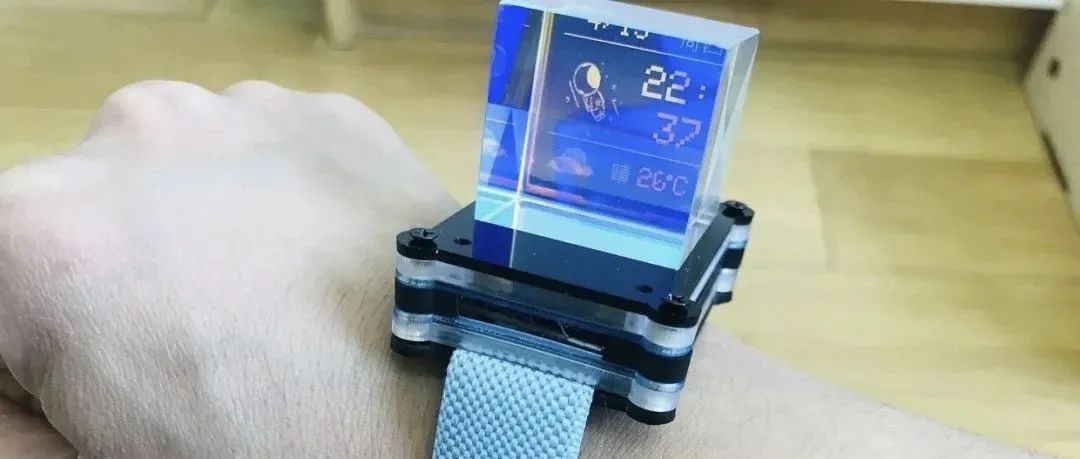
Recently, while browsing Hackaday, I came across a really cool watch project that is still in development, and I wanted to share it with everyone.
Background
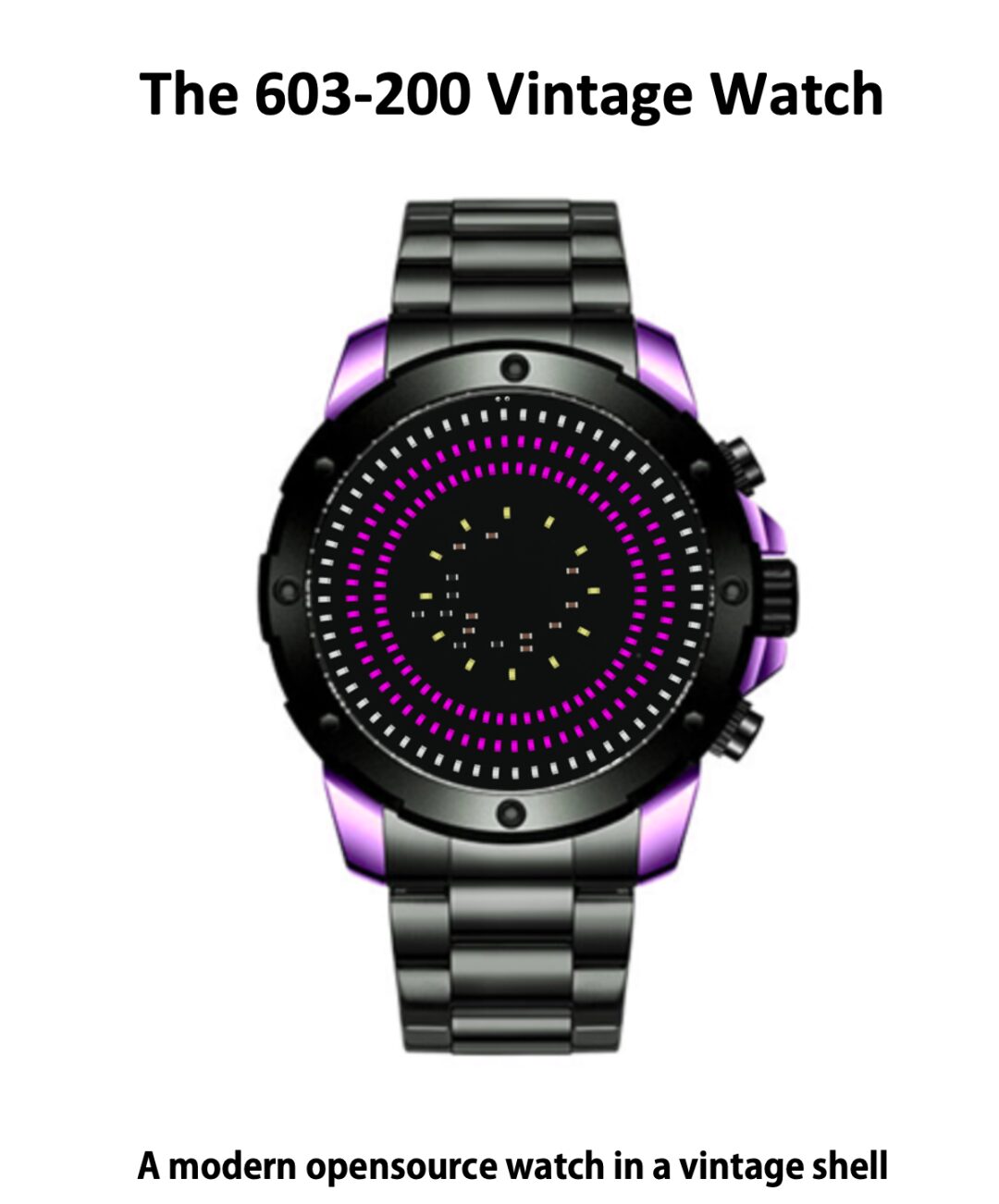
The author is creating this ESP32 Pico Watch which has Wi-Fi, Bluetooth, Mesh, a vibration motor, an RTC, four buttons, a USB-C connector, and most importantly: 192 LEDs that you can control to create complex lighting effects on the watch.
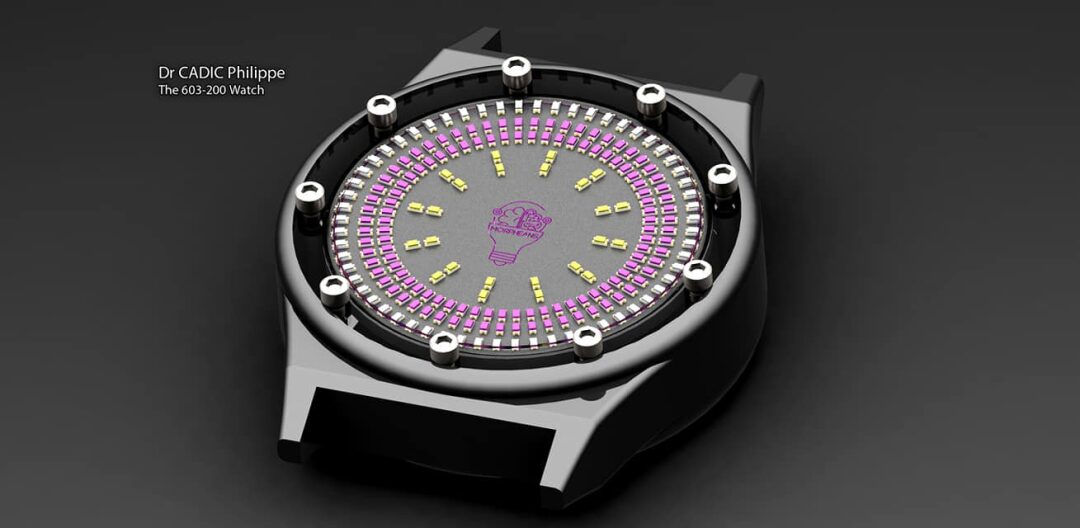
There are a total of four rings of LEDs. The outer ring is the second hand, which will be white. The two middle rings are purple, indicating minutes, and the inner ring is yellow, indicating hours.
The LED driver is an IS31FL3733-TQ.
The watch is inspired by the Japanese brand TokyoFlash® (www.tokyoflash.com).
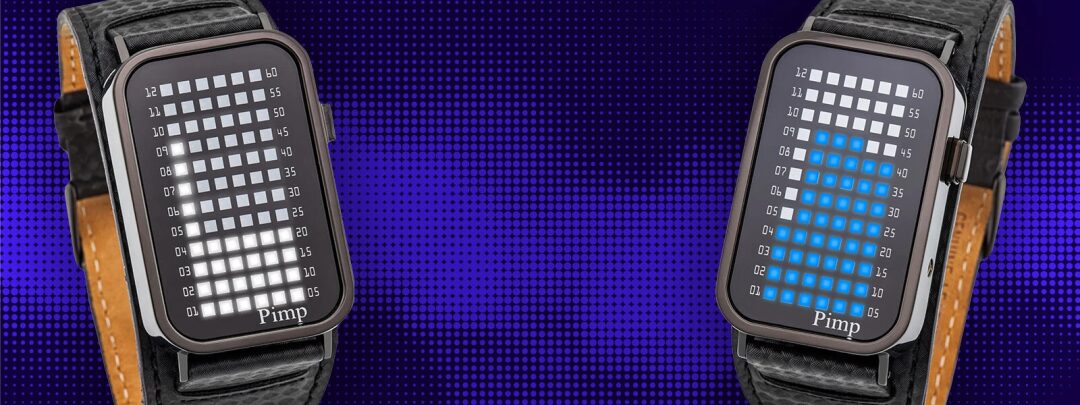
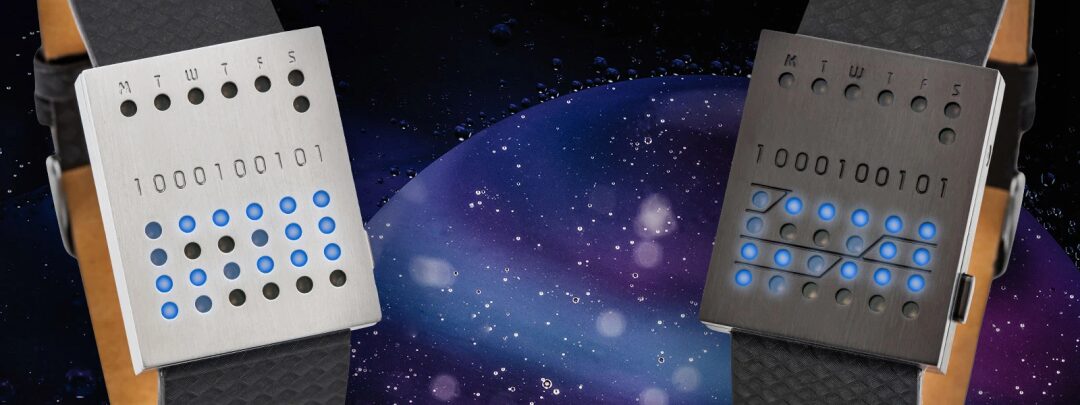
The author hopes to create a fully modernized connected watch that can communicate with our phones or any other IoT devices.
What This Watch Can Do
The 603-200 Morphwatch® is designed to produce stunning visual effects, using 192 LEDs made up of four rings of 603-sized SMD color LEDs.
-
1 outer ring composed of 60 white 603 LEDs for the second hand. -
2 middle rings of purple 603 LEDs to display minutes. -
1 inner ring of yellow 603 LEDs representing hours.
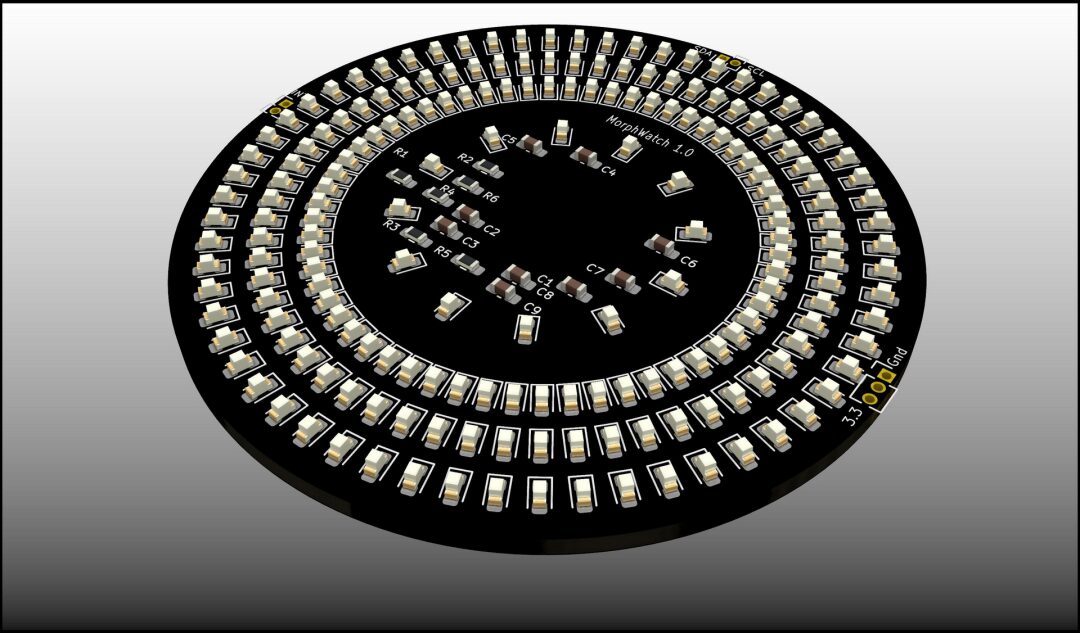
Each LED can be programmed independently using the I2C library or through Python scripts.
In terms of visual effects, users can maximize their creativity.
Apart from visual effects, this watch has many other functionalities due to its powerful Espressif® ESP32 PICO D4 chip.
It can interact with your phone via Bluetooth. Through the phone, you can use the watch to enter a private MESH wireless digital network for communication.
You can make the watch vibrate when your phone is away (via Bluetooth) or at a distance (via Wi-Fi).
With four buttons, you can design your watch to trigger actions, such as sending emergency emails, sending vibration messages to another watch, etc.
Using the MESH ESPNow protocol, each watch can communicate with another watch, sometimes over distances of hundreds of meters; you can establish your own long-distance communication system outside of cellular networks.
You can also switch your watch into an access point, a web server, so anyone can connect to obtain information (the concept of a watch business card…)
Of course, it has the most important function of telling time.
Related Files
Because this watch is open-source, everyone can access all related files.
Main Content
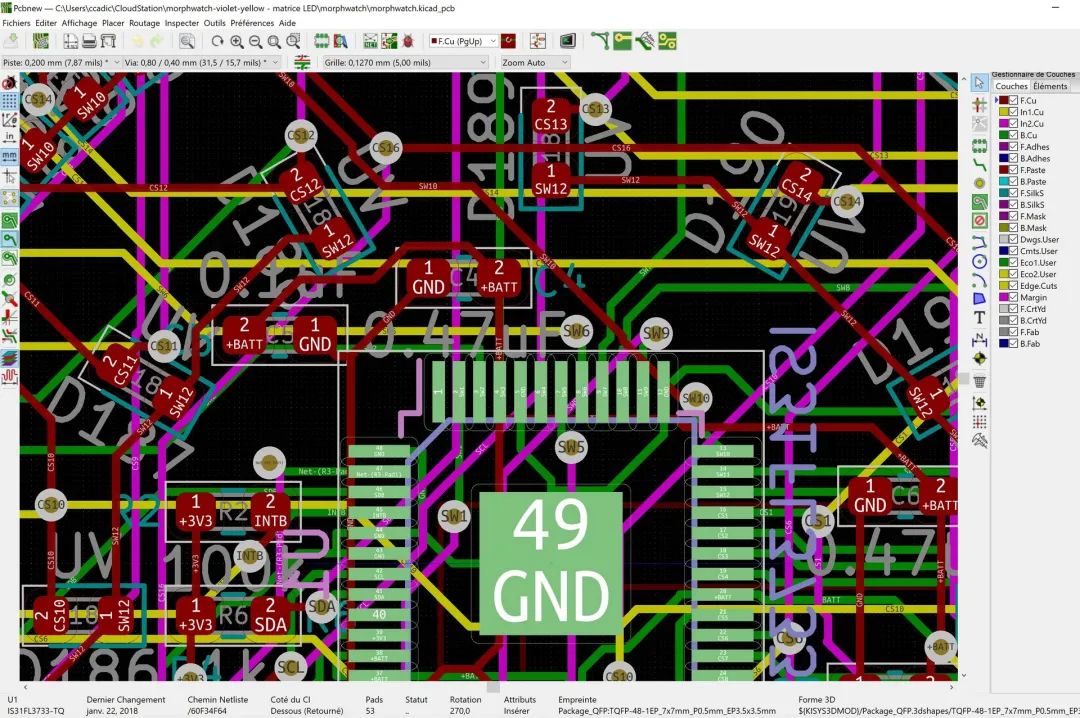
This watch is inspired by an open-source DIY e-ink screen watch! It has a versatile appearance and is equipped with wireless Bluetooth pedometer alarm clock!
We want to create a hybrid concept of a retro LED watch + connected watch. Naturally, we thought of the powerful ESP32 PICO D4 chip, which is also the classic 603 LED. If this version is successful, we plan to move the 603 LED package to 402 and reduce the watch diameter, making it more suitable for women to wear.
With a set of 192 LEDs driven by the classic IS31FL3733-TQ chip, we can achieve a series of really cool visual effects because each individual LED can be controlled independently via I2C, allowing us to unleash our creativity in designing the desired effects.
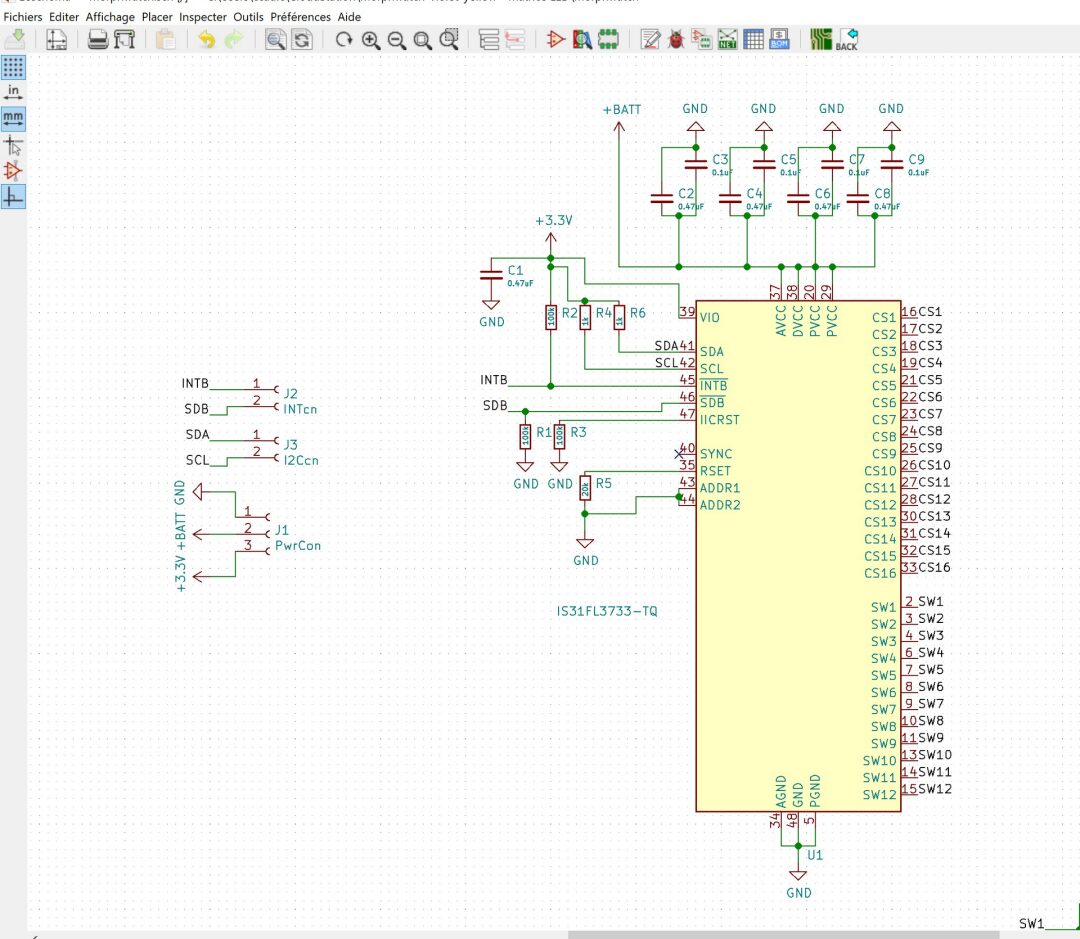
ESP32 PICO 4D connects the watch with Wi-Fi/BT and, most importantly, ESPNOW, allowing us to create a community MESH network.
If there are enough watches, we even envision establishing a global communication network outside of the existing commercial locked communication networks.
The first concept was created using SolidWorks. This is a cool software that can assess various possibilities and test different graphic options.
▼ Click to view
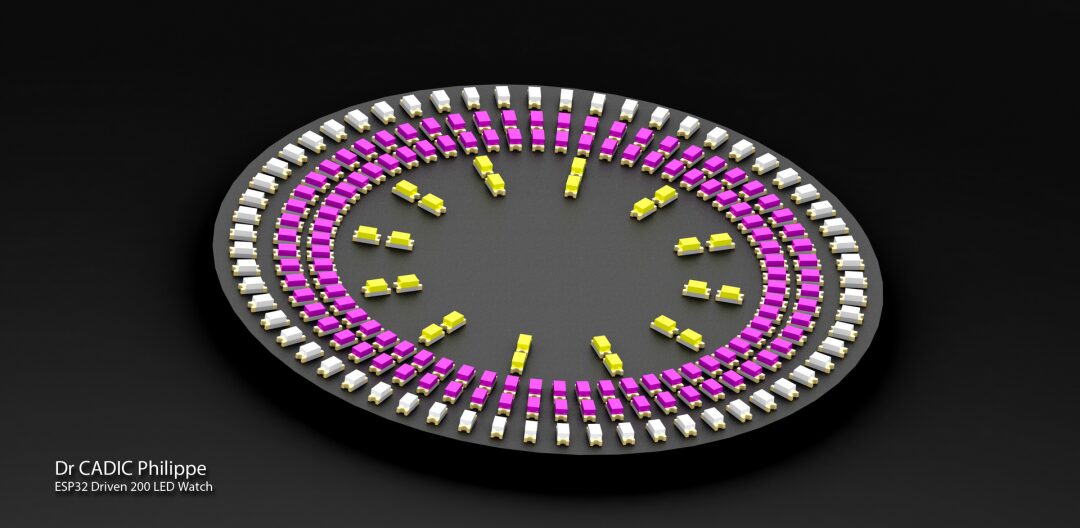
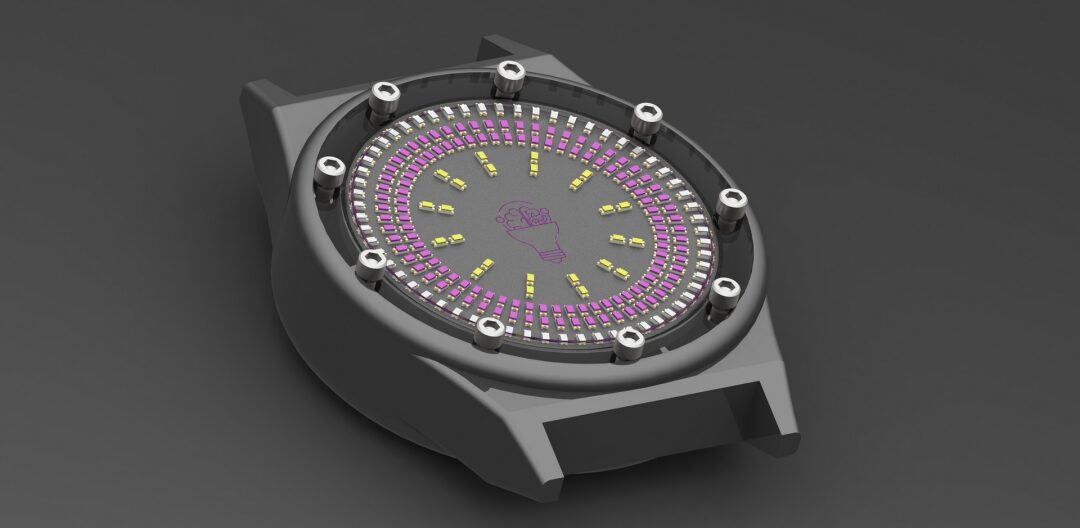
PCB Motherboard
Our first board contains all the watch components (mainly based on the schematic of another open-source watch project called: Watchy. Open-source DIY e-ink screen watch! It has a versatile appearance and is equipped with wireless Bluetooth pedometer alarm clock!) It already has most of the classic modules:
-
Lithium battery charger module -
ESP32 PICO D4 to drive the system -
DS3231MZ real-time clock -
A CP2104 to convert USB to readable signals for ESP32 -
A ME6211C33M5G-N 5v/BAT to 3.3v voltage regulator -
A TP4054 for charging
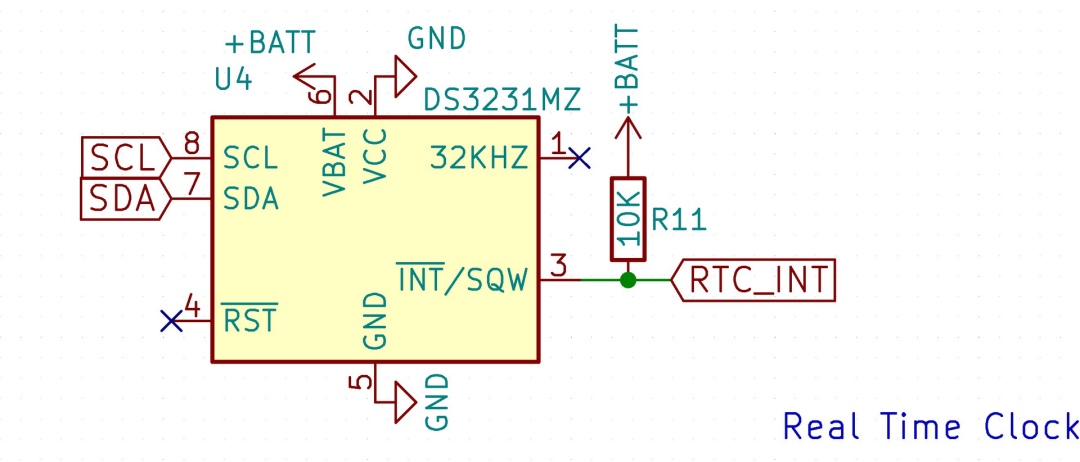
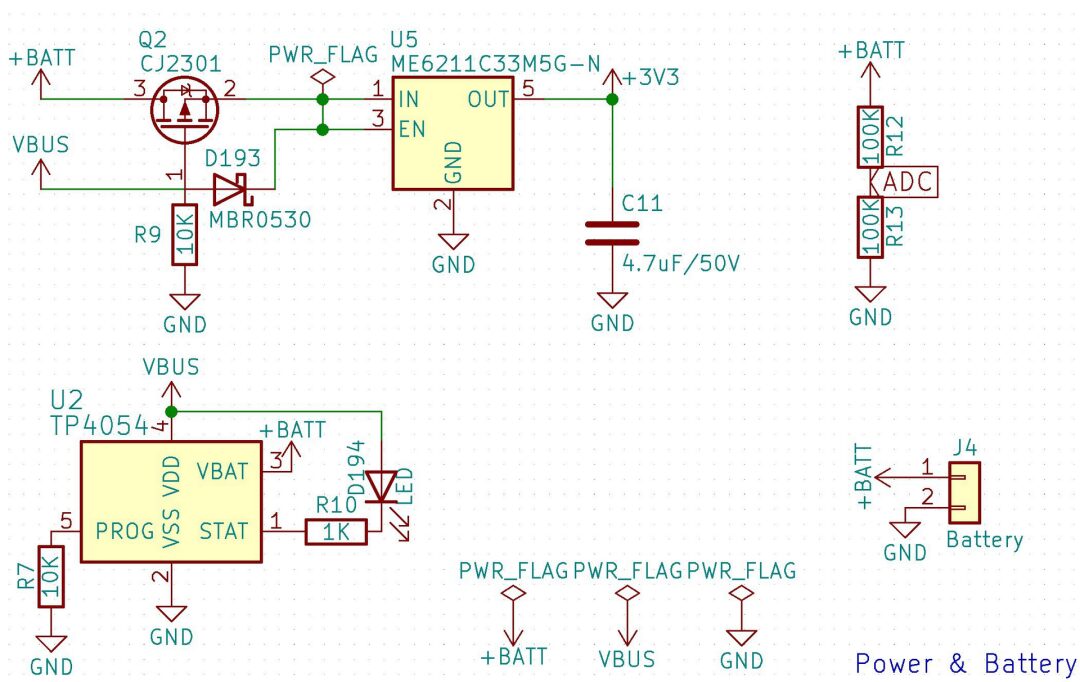
In this project, we need to frequently check the battery status. The ESP32 Pico D4 will read the battery status from the (ADC).
This first PCB board will send power and I2C signals to the sister board that holds the LEDs and LED driver. This way, we can easily design various different sister boards.
The motherboard has plugs and buttons to select various functions.
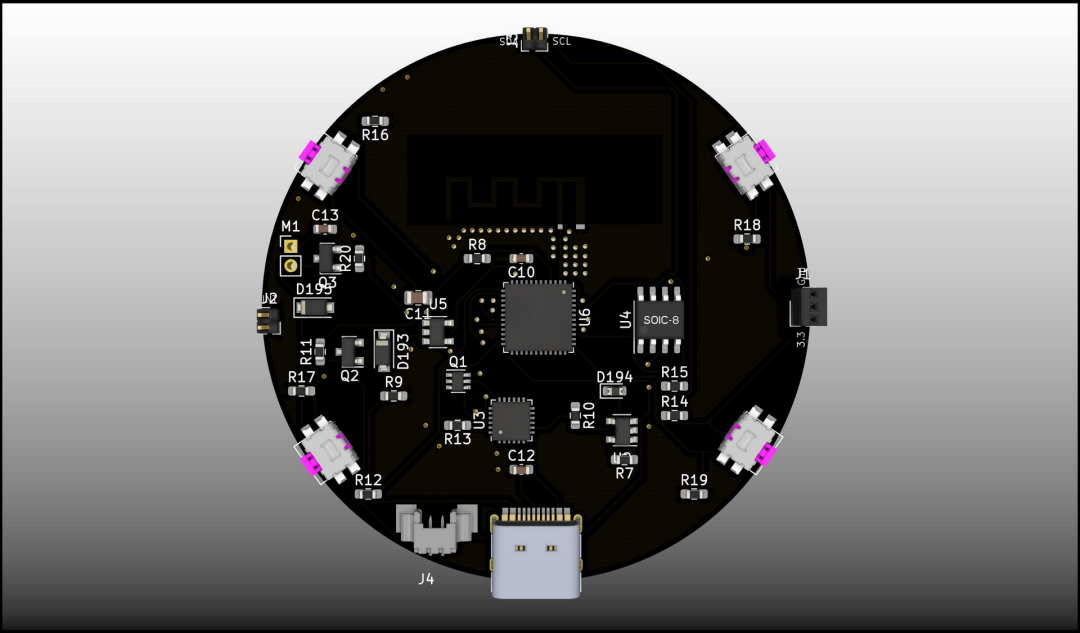
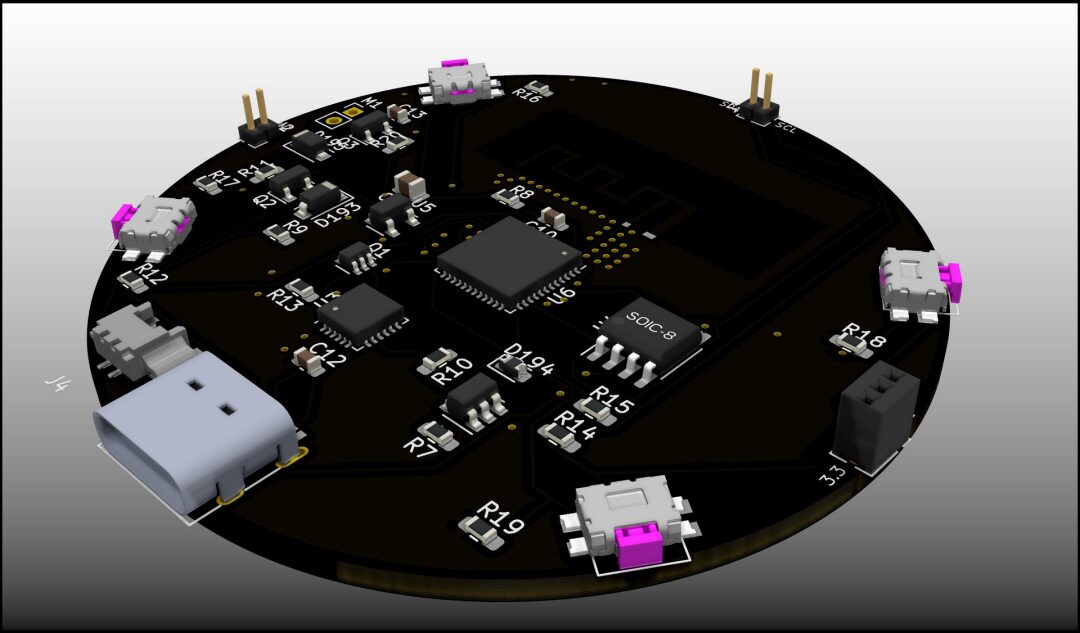
The Wi-Fi/BT antenna is a PCB antenna. We plan to offer an option for RFM95 _868/915MHZ in the next version. We need to work on handling two different antennas.
The USB plug for charging and uploading Arduino IDE sketches will be a USB-C port.
PCB Sister Board
The second part of this concept is to have a sister board that will accommodate 192 LEDs. A set of three connectors will send power and signals from the main board to the sister board. We found using this type of connector interesting, allowing maker friends to easily redesign a sister board with their own designs and creativity (adding a true color display, creating different LED patterns, adding micro motors with complex functions, etc.). Having a second board is also a good way to sandwich the battery in between.
The LED sister board is pluggable. The design concept of this watch is that the wearer can unscrew the screws on the watch to tinker with the little gadgets inside.
Aside from the LEDs, only one IC is used, which is an IS31FL3733-TQ that accepts the I2C protocol and can drive up to 192 LEDs organized in a matrix style.
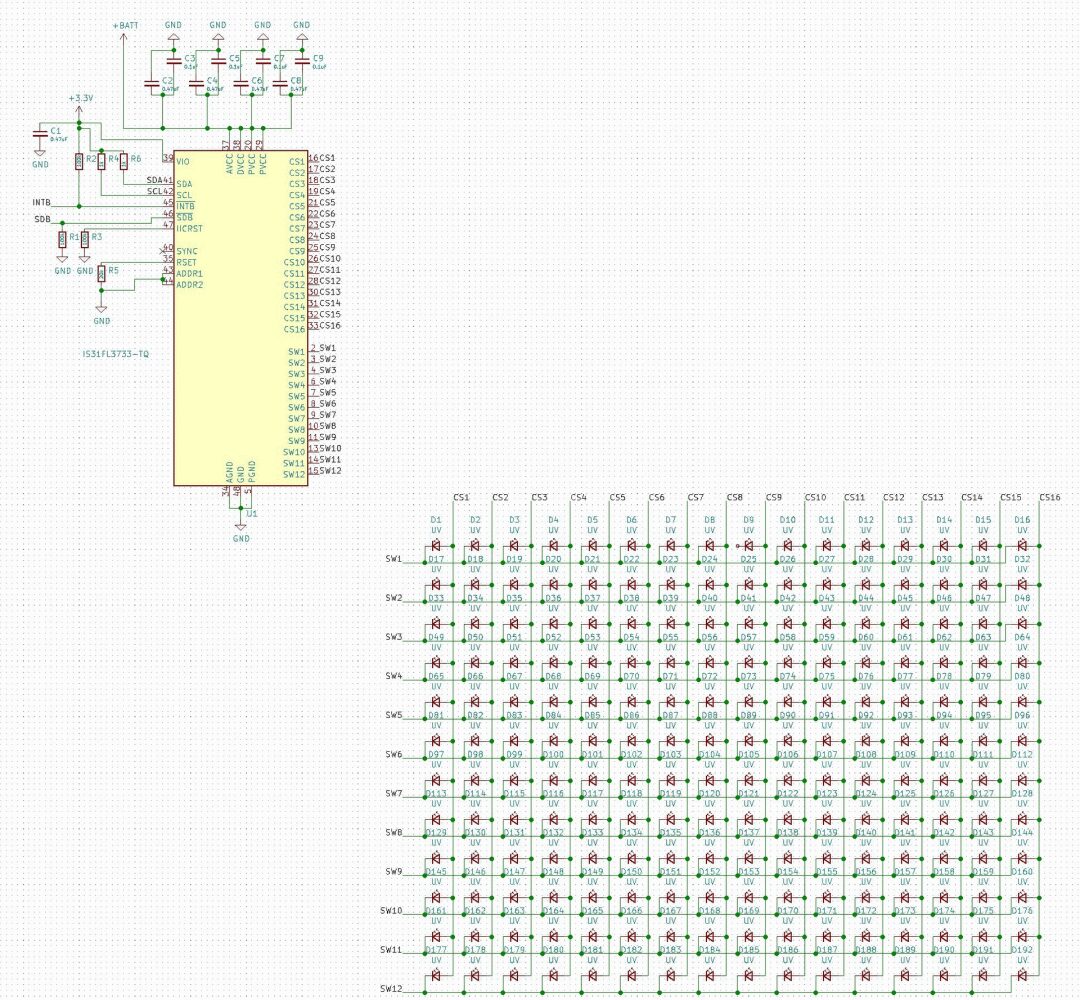
It provides a cool 56mm diameter PCB (more suitable for men and RAP singers). Once the prototype passes functional testing, we will move the 603 package to 402 and reduce the diameter to 40mm, making it more suitable for women.
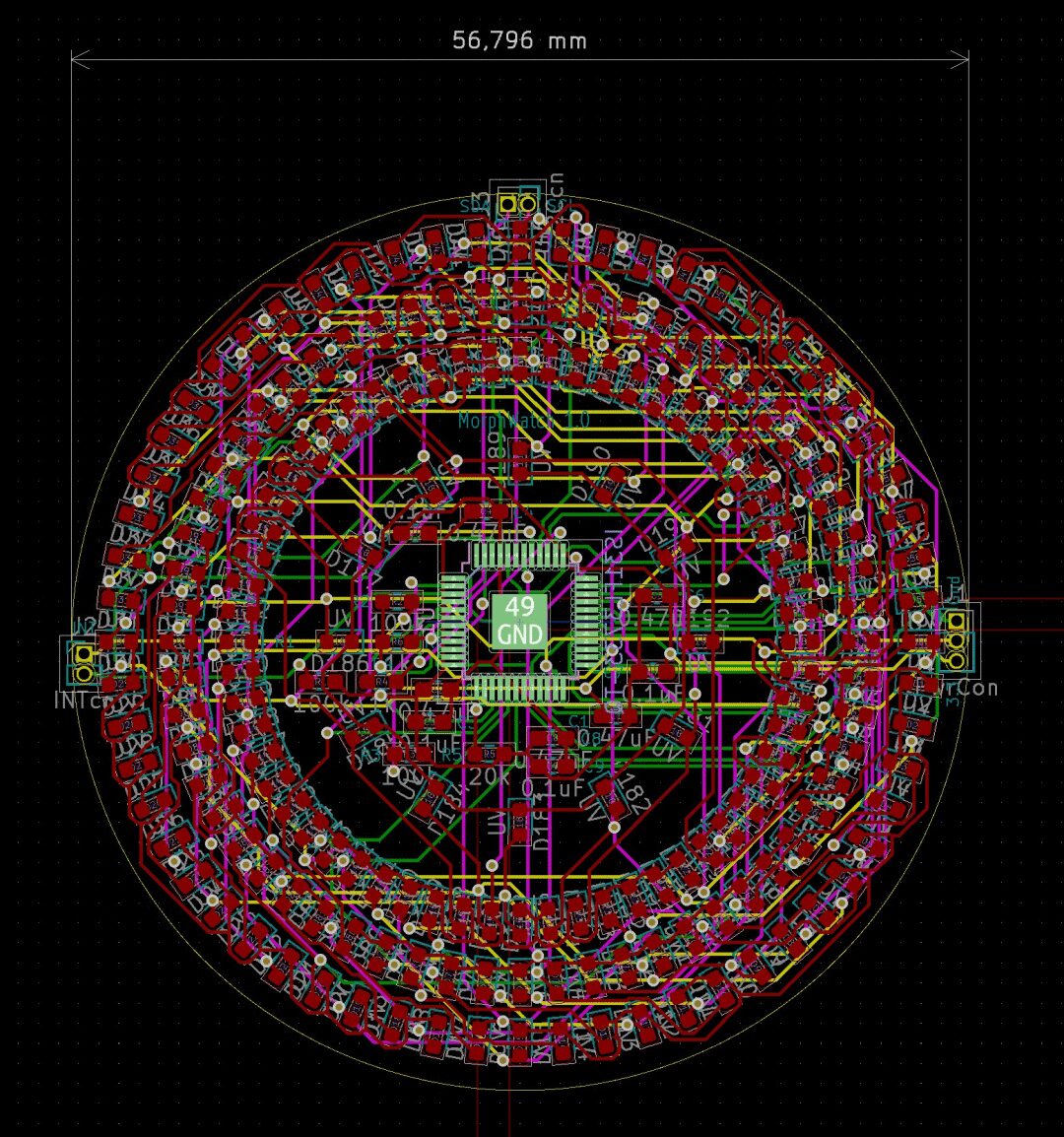
After struggling for several hours to design a two-layer PCB without success, this will be a four-layer PCB.
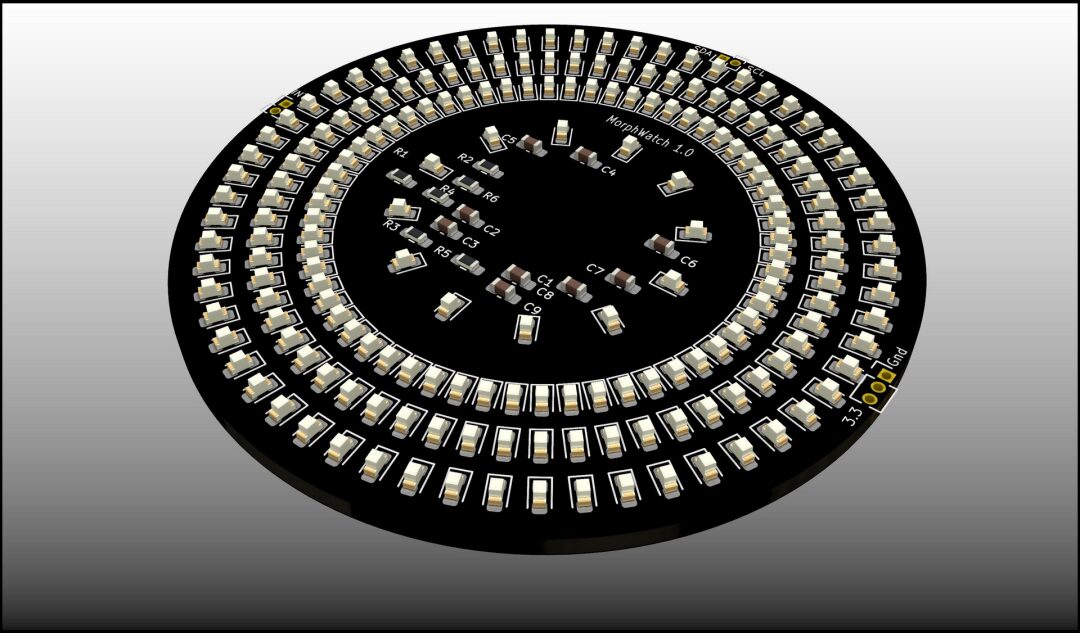
That’s the current progress of the watch. If you want to be the first to know the latest updates, feel free to follow this project on GitHub!
https://github.com/ccadic/The603-200
Original link: https://hackaday.io/project/181159-the-603-200-watch
Project author: pcadic
Hardware Arsenal
Click to learn more👆
If you have any comments or corrections regarding the article translation, feel free toleave a message!
If the code involved in the project is not convenient to download from the author’s GitHub repository, you can download it from the community forum by clicking “Read Original”!
Watch Series Review
▼ Open-source DIY E-ink Screen Watch! Versatile appearance with wireless Bluetooth pedometer alarm clock!
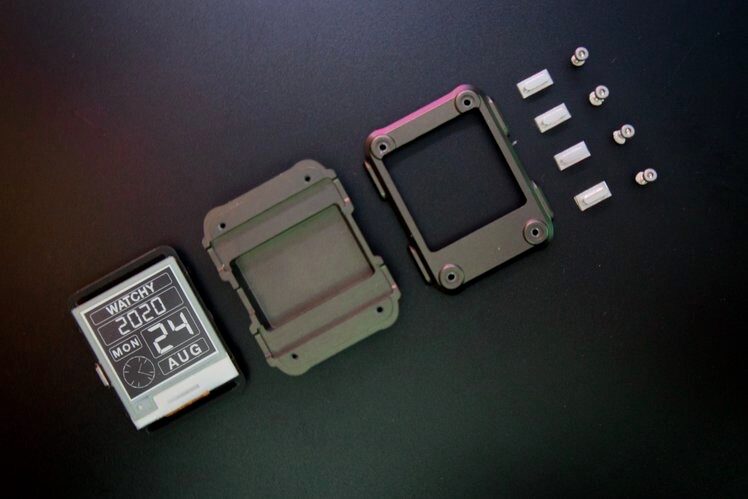
Click to read👆
▼ IO Watch: Programmable watch made with Arduino UNO
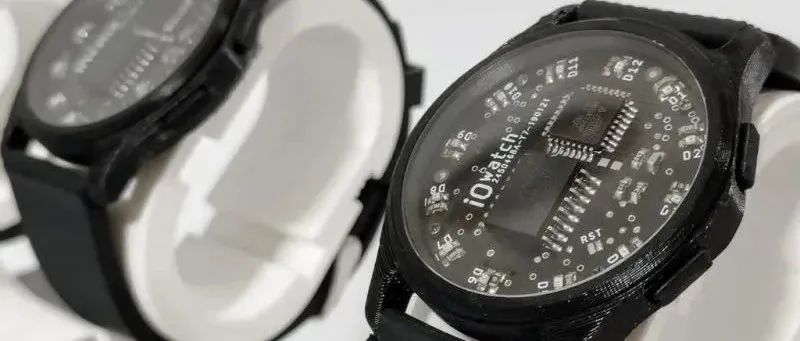
Click to read👆
▼ DIY a practical and stylish binary watch
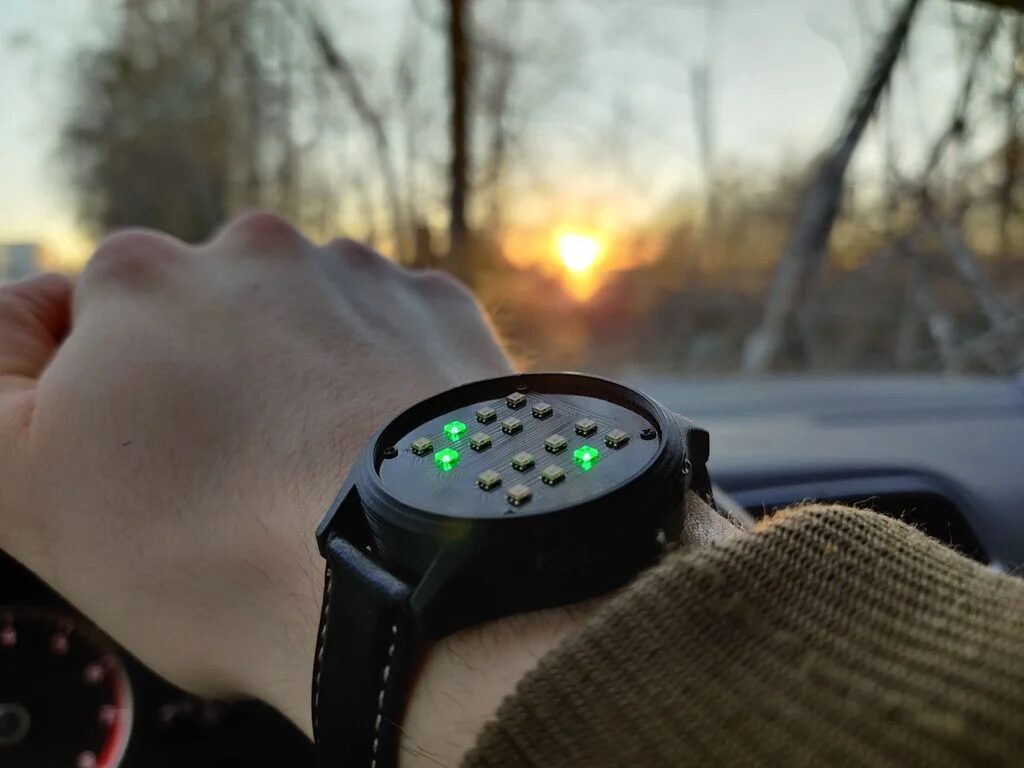
Click to read👆
▼ Recreating the Casio F-91W! However, mine is bigger.
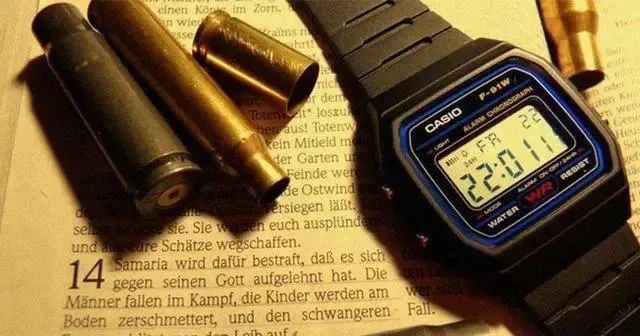
Click to read👆
▼ “I made a new watch for myself again this New Year!”
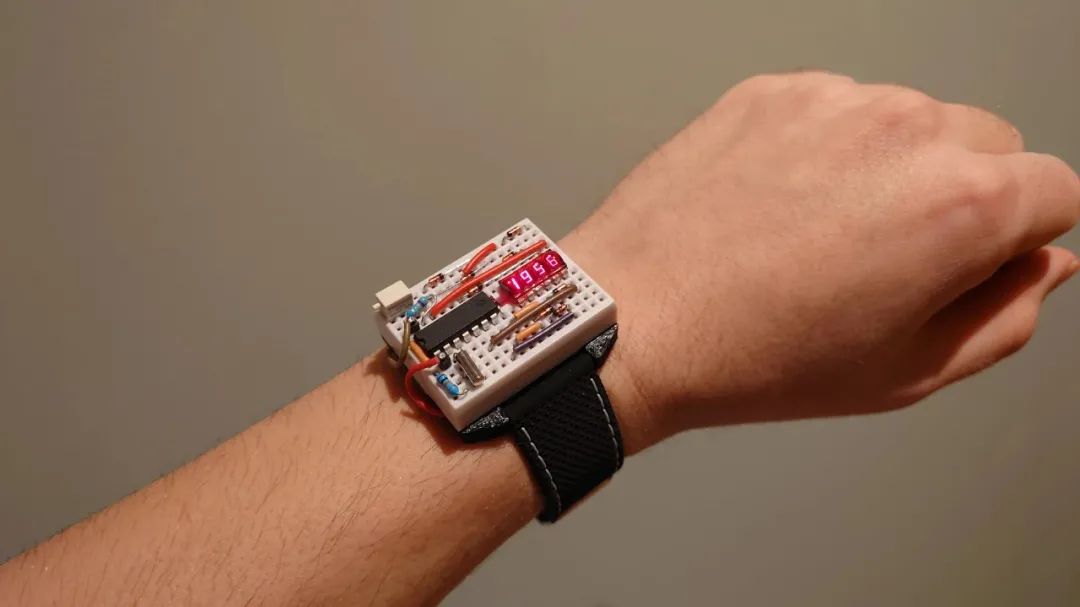
▼ E-ink Screen Watch – A project that is still not completed
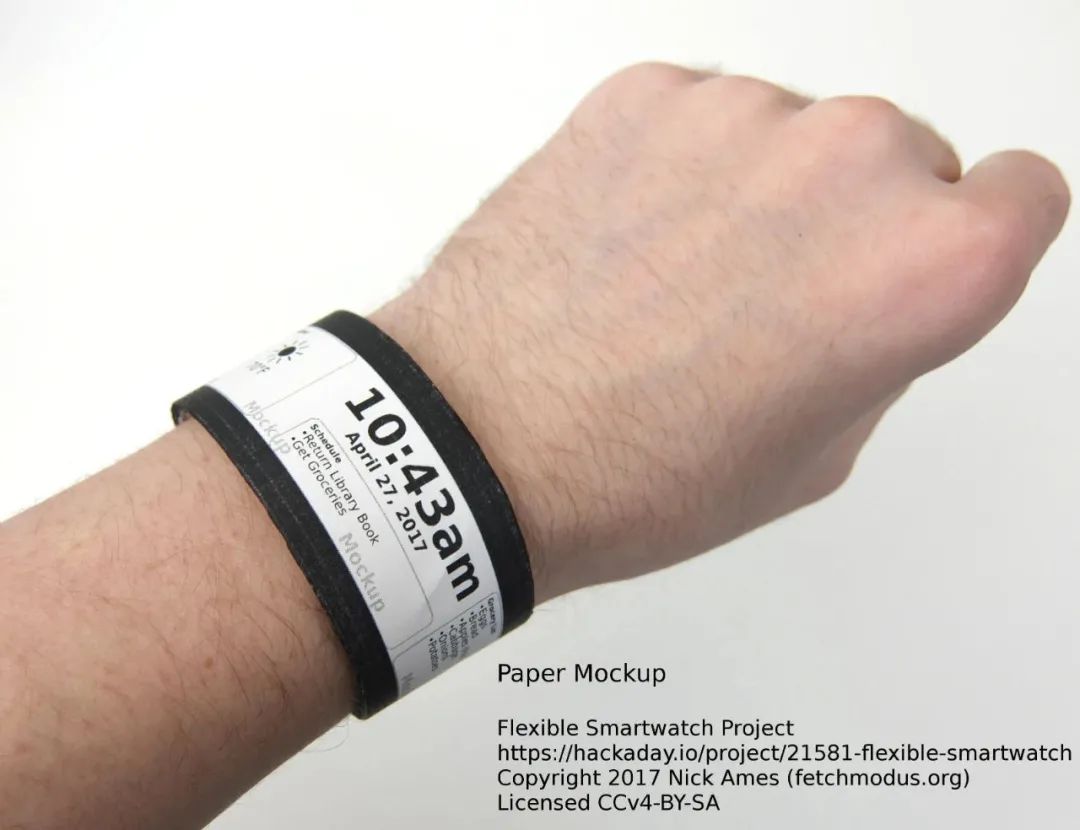
▼ Paying tribute to Zhi Hui Jun? Homemade a transparent watch with an astronaut theme!
